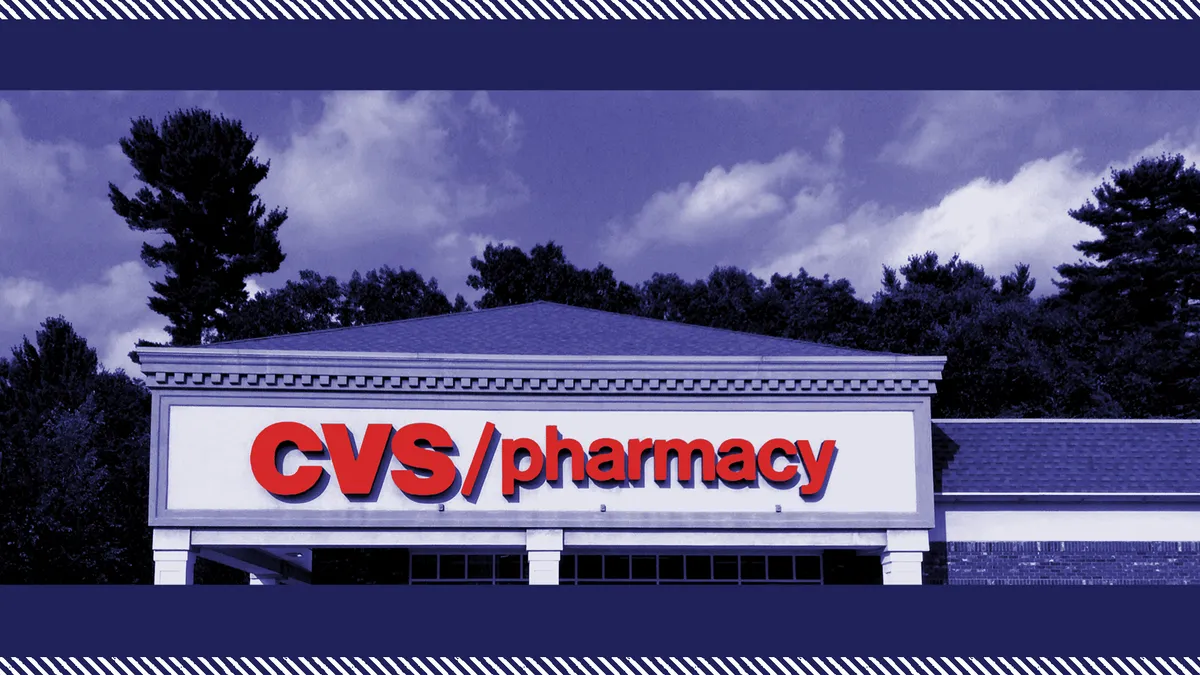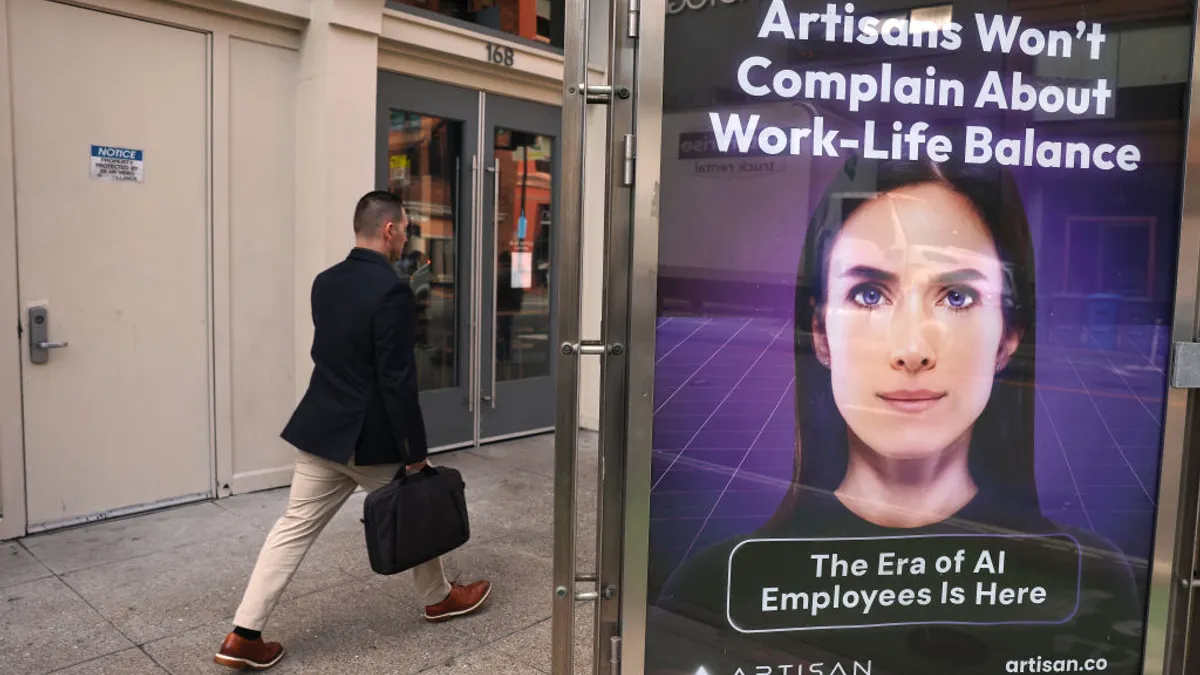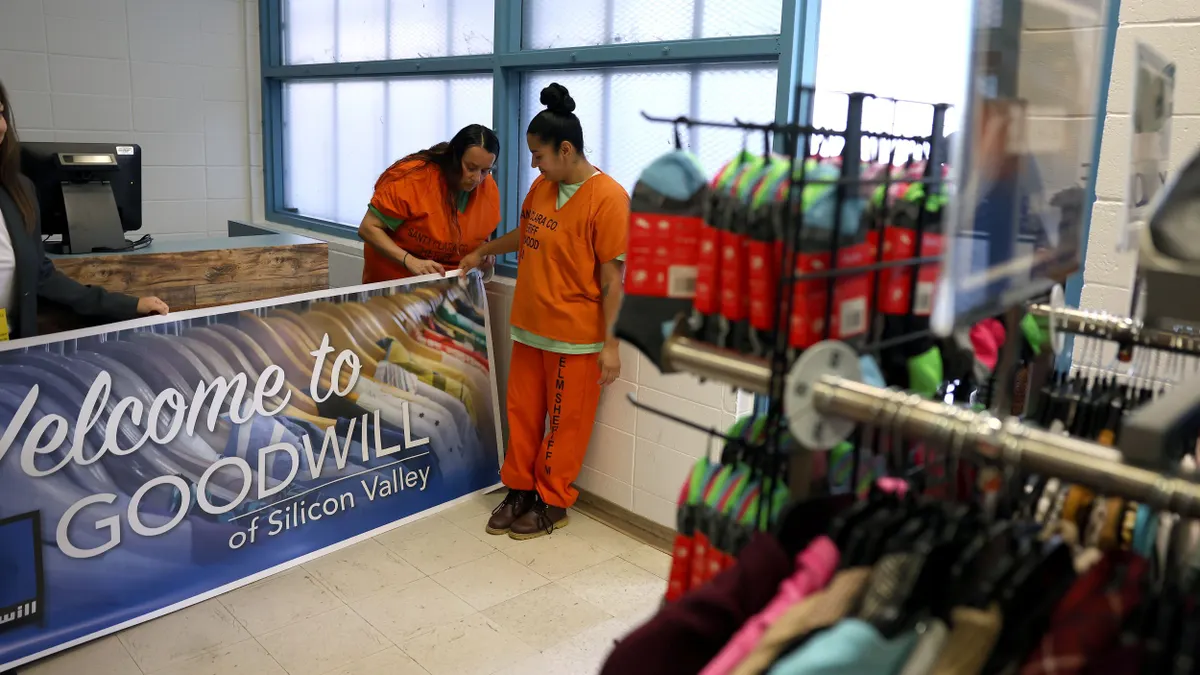In a May 6 earnings call, CVS Health announced 8% growth in Q1 revenue for 2020 compared to 2019. Earlier this year, the pharmacy and retail chain noticed rising in-store and online sales stemming directly from the novel coronavirus and started addressing this expected growth with expansive hiring initiatives.
"All of us were facing an unprecedented reality," Jeffrey Lackey, VP of talent acquisition at CVS Health, told HR Dive. "We realized that we needed to create an accelerated hiring process that allowed us to be able to get support to our front lines quickly and with compassion."
As an essential business, CVS estimated it had 200,000 employees on the front lines, a group that includes store associates, pharmacists, nurses and other clinic workers. Understanding that this group needed expanded leave, in case they were sick or otherwise unable to work, the company realized it needed to hire more employees, quickly. With demand spiking as well, the 24-hour employer set a hiring goal of 50,000.
To meet its lofty recruiting goals amid the coronavirus pandemic, the company created a virtual talent acquisition process and streamlined hiring of furloughed employees from corporate business partners. Both of these initiatives materialized in a matter of days thanks to weekend and after-hours work of about 40 individuals, Lackey estimated.
Since the launch of this "accelerated hiring initiative," the company has received more than 1.3 million applications and has more than 60,000 candidates hired or in the hiring process. In a normal month that last number would be closer to 10,000, according to a CVS Health spokesperson, indicating that the recruiting function was almost six times more productive than it is normally.
Partnership hiring
With shutdowns and shelter-in-place orders enacted across the U.S., some industries were hit harder than others. Hotels and hospitality companies, in particular, were among the first to announce layoffs or furloughs. Starting with Hilton and Marriott, CVS built up a list of more than 60 partner organizations from which it could hire.
To reach this talent pool of furloughed workers, CVS built landing pages co-branded with the partner organization. The co-branding helped because it contained messaging from the original employer to increase comfort and credibility for this pathway.
"I know what those other [talent acquisition] leaders were going through," Lackey said, reflecting on his experiences making layoffs in previous roles. "At the same time, I knew I had an opportunity to help them with 50,000 jobs and I wanted to create a connection between us and them."
Lackey's talent acquisition marketing team worked around the clock to make the landing pages and a team of recruiters processed the candidates and identified suitable roles for them within CVS Health.
"It's not a terribly big inferential leap to think the people who are on the front lines of a customer service experience for a [hospitality company] have been trained in customer care, in exceeding customer expectations," Lackey said. "A customer service professional or store associate would benefit greatly from having that previous training and coming into the role because they will be able to treat our customers, patients and our members with that same care and an understanding of customer service basics."
While some roles had more direct pathways to CVS Health job openings than others, Lackey noted that sometimes they needed to be creative. For example, individuals who clean hotel rooms do not have an exact match within a pharmacy and retail chain, but some matriculated into warehouse and distribution center roles.
"Even for different types of roles all through the organization, you can draw what I refer to as competency parallels," Lackey said. "It might not be the same job. Working at the front desk of a hotel might not be the same job. But you still have to treat people friendly. You still have to have that attention to detail. You still have to be able to multitask and handle pressure and volume. [O]ur customer service associates and colleagues have to do the very same thing, just with a different set of challenges and problems."
A virtual recruiting process
While COVID-19 forced many employers to find remote solutions for in-person processes, going virtual has allowed CVS to also move faster in recruiting. Lackey credits existing partnerships with technology providers as integral to its ability to go fully virtual. CVS was already hosting virtual career fairs for talent sourcing and using advanced applicant tracking systems and virtual interview platforms.
"We've been putting [technology] in place over the past several years to create a better candidate experience, and a more virtual one, anyhow," Lackey said. "So quite frankly, we were leveraging an existing platform that was, unwittingly, built for exactly this scenario."
To successfully execute this strategy, however, many parts of the organization needed to be working in sync to make sure hiring processes were not just virtual, but also accelerated — "to as little as one business day," Lackey said.
Where the circumstances around the pandemic really made a difference was in adoption of the fully virtual process. Lackey said he believes the conditions forced his talent acquisition teams to quickly adopt remote recruiting and hiring, whereas under normal circumstances there would be pilots, staggered rollouts and adjustments before wide-scale adoption.
"We went to virtual almost overnight," Lackey said. "We have something that would normally take a large corporation months, years potentially. […] In 48 hours, we created an accelerated hiring process."
Virtual career fairs were "a big hit," Lackey said, and virtual interviews saw a significant uptick within recruiting for professional roles. CVS also implemented virtual job tryouts — part-assessment, part-interview more broadly across the company but also for roles of urgent need.
"The tryouts are very role specific," Lackey said. "They're validated against a specific role," meaning they predict a candidate's likelihood of success while reducing bias in the hiring process. "It's a great tool to allow our leaders to be able to get a very short list of individuals to be able to pick from."
While it may seem daunting to have a entirely remote recruiting process, Lackey suggests keeping a few key details in mind.
First, any hiring process, whether virtual or in-person, can be improved to better meet company needs and identify fit. Second, candidates prefer virtual because it is quicker and generally more convenient, Lackey said. Third, the company benefits from a shorter process.
The virtual process and this new way of working, Lackey said, "will be very beneficial for all of the HR and recruiting professionals to start solving some of the problems that are inherent in making sure that we select the best, that we give a great experience, and that we do so at speed."



















